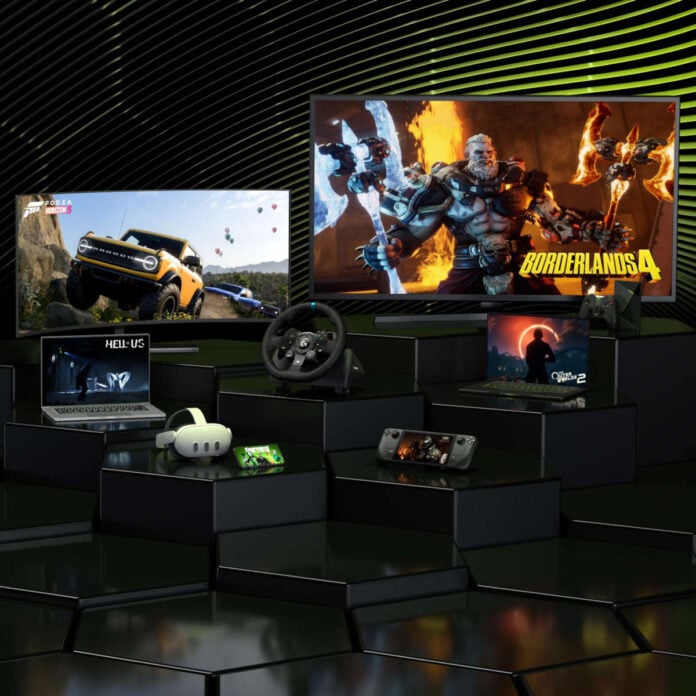Nvidia has announced several major additions to GeForce Now at Gamescom 2025. The streaming service will soon have the capabilities of Blackwell GPUs at its disposal, but I’m actually more interested in features like ‘Cinematic Quality Streaming’ and ‘Install-to-Play’.
Nvidia is announcing these upgrades today ahead of a September rollout, and every new feature bar persistent cloud storage will come at no additional cost.
We’re about to get a lot more streaming bank for our GeForce Now bucks, it’s almost dizzying. Without further ado, let’s discuss what Nvidia plans to offer.
GeForce RTX 5080 SuperPods
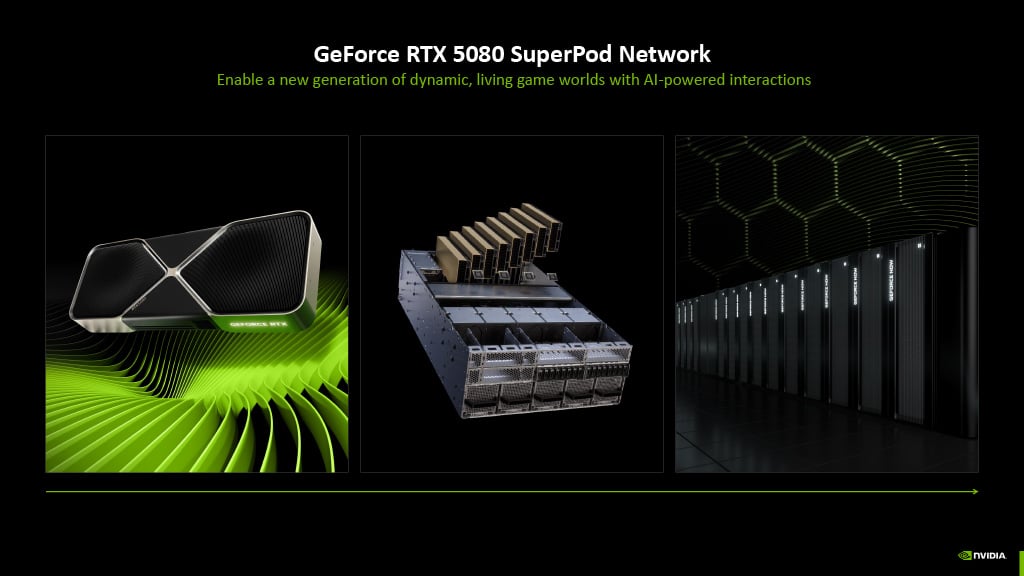
Nvidia is improving the performance ceiling of GeForce Now, specifically with new RTX 5080 SuperPods. These servers will support Blackwell goodies such as DLSS 4, and the systems are also receiving other hardware upgrades too.
Firstly, let’s talk GPU. Though RTX 5080 in name, these SuperPods actually pack server-grade cards with a considerably larger VRAM capacity of 48GB. That’s quadruple the buffer size of an off-the-shelf model, which I doubt anyone will be able to easily saturate.
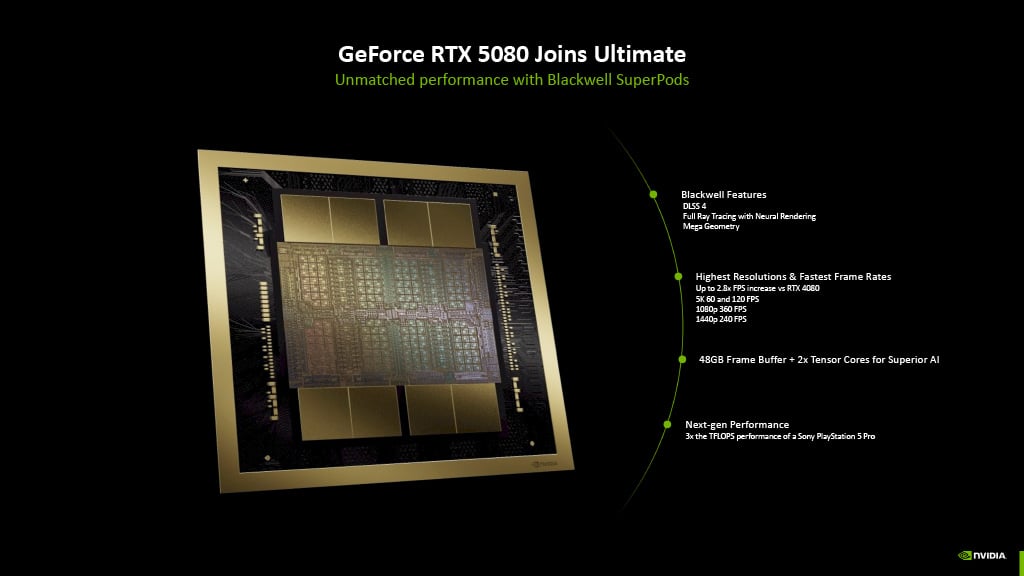
Nvidia is also introducing AMD Ryzen ‘Zen 5’ CPUs into these Blackwell SuperPods. While the company didn’t share specific models, it did state that these processors will afford each session an eight-core, 16-thread chip running at 4.4GHz. Better still, the entire system will boast double the RAM of existing configurations.
RTX 5080 SuperPods come part and parcel with support for DLSS 4 but also push streaming refresh rates and resolutions up. GeForce Now will soon offer a 5K/120Hz mode at the top-end, in addition to 5K/60Hz, QHD/240Hz, and FHD/360Hz.
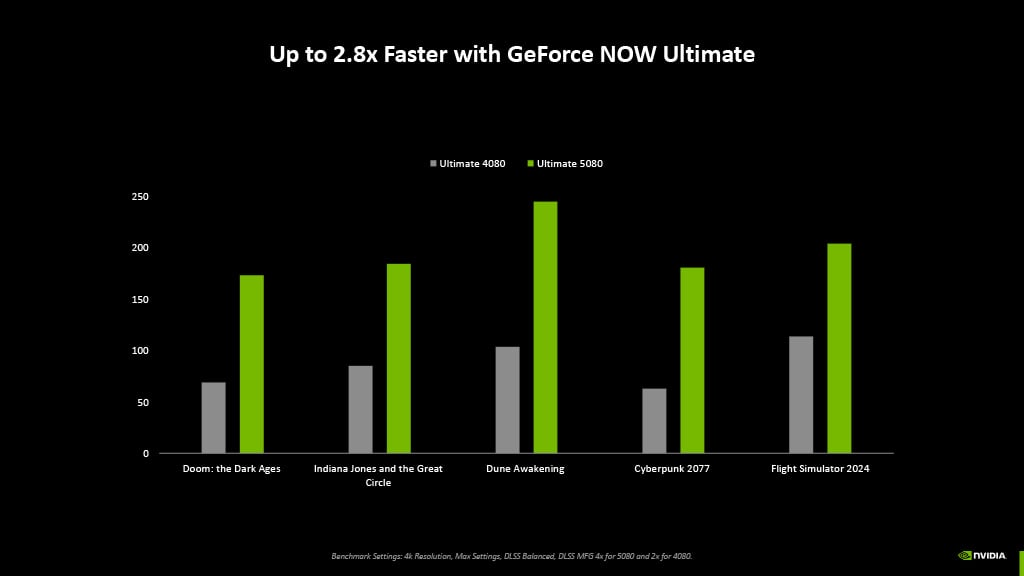
It’s unclear how much faster RTX 5080 SuperPods are in like-for-like scenarios. That said, Nvidia reckons you can expect frame rates that are “up to 2.8x faster” using Multi Frame Generation.
In the short-term, these RTX 5080 SuperPods will only have particular games available to play. However, Nvidia should bring parity with older servers in due course.
Cinematic Quality Streaming (CQS)
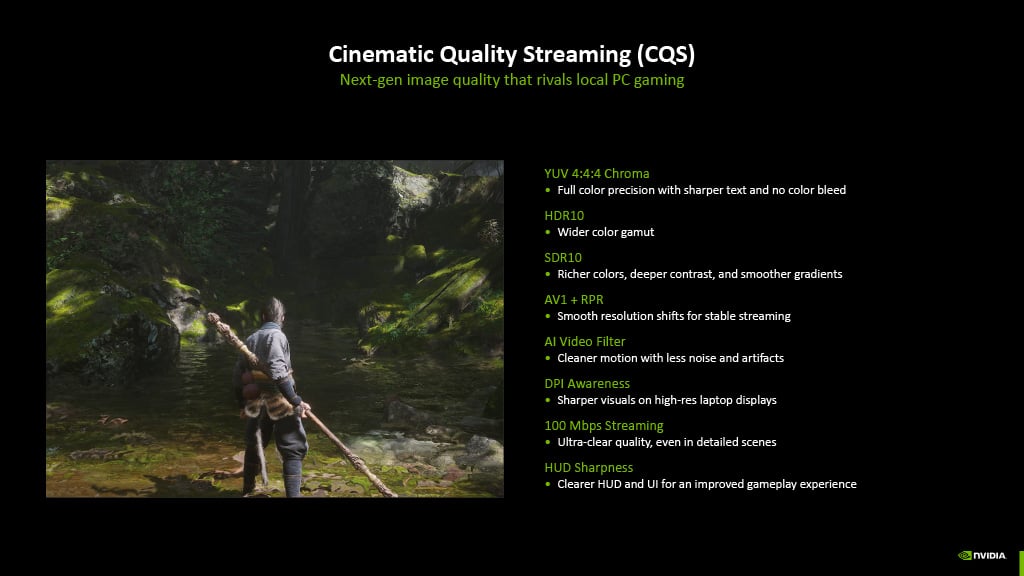
Performance is only part of the equation when it comes to streaming, as all those frames are for naught if they don’t reach you in a smooth, high-quality format. While GeForce Now is generally solid in this respect, Nvidia is pushing fidelity further with a new ‘Cinematic Quality Streaming’ (CQS) option.
While I decry the use of ‘Cinematic’ in the naming of this preset, CQS does promise a bunch of welcome features that will boost GeForce Now streaming quality. Looking at the Black Myth: Wulkong screenshot below showcasing the improvements, I’m curious to see how much higher image fidelity will be.
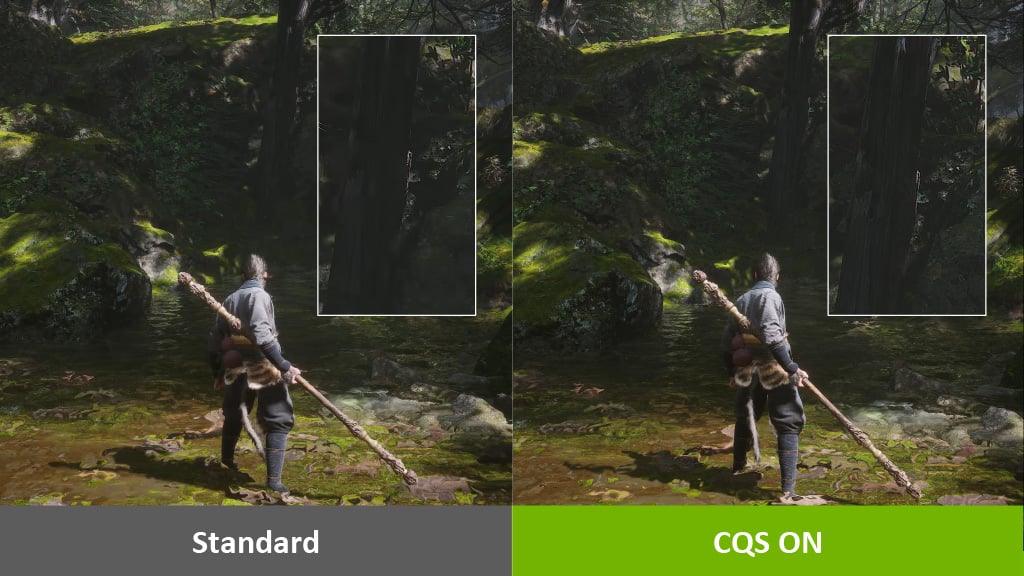
Back-end changes such as support for YUV 4:4:4 Chroma and HDR10 provide wider colour gamuts and enable GeForce Now to make better use of high-end displays. AV1 and RPR (Reference Picture Resampling) also allow for smoother resolution shifts where necessary.
More broadly, Nvidia is pushing streaming bandwidth up to 100Mb/s. The more data a stream contains, particularly with an efficient codec like AV1, the higher quality the final output will be. I’m looking forward to seeing the final result first-hand.
Install-to-Play
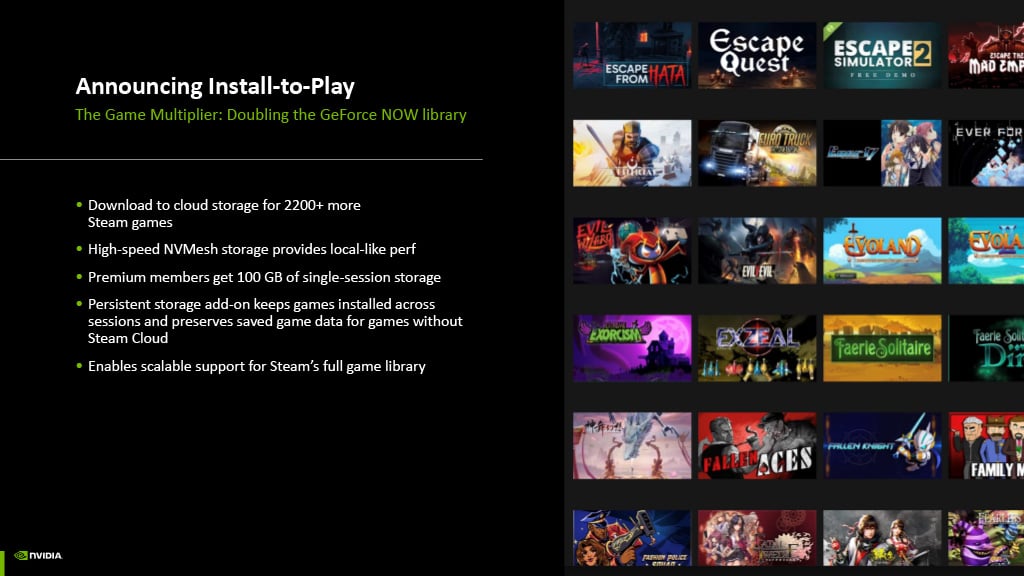
One shortcoming of GeForce Now is game availability. For the moment, you’re subject to whatever games Nvidia has pre-installed on its servers. However, the introduction of ‘Install-to-Play’ helps alleviate this bottleneck and is the feature I’m most excited about.
Through Install-to-Play, Nvidia is promising to double the existing GeForce Now library through the addition of 2,200+ more Steam games. For this number to grow, all developers need to do is enable cloud streaming support for their game.
So, while you won’t be able to load your entire Steam library, you’ll be able to quickly install a supported title on a GeForce Now SuperPod if it’s not ready to pick up and play. The caveat is you only have 100GB of single-session storage available for this feature, meaning games larger than that install size are a stumbling block.
There is a workaround if you opt into Nvidia’s optional persistent cloud storage. Through this premium add-on, you can have access to at least 200GB of space whenever you need it. Pricing for various storage tiers is as follows:
- 200GB – $2.99, £2.690, €2.99
- 500GB – $4.99, £4.49, €4.99
- 1TB – $7.99, £6.99, €7.99
I’m not a fan of paying for add-ons on top of subscriptions, but I’m glad this option is now open to those who are. Even with my preferences, I must admit these prices don’t seem egregious.
LLS
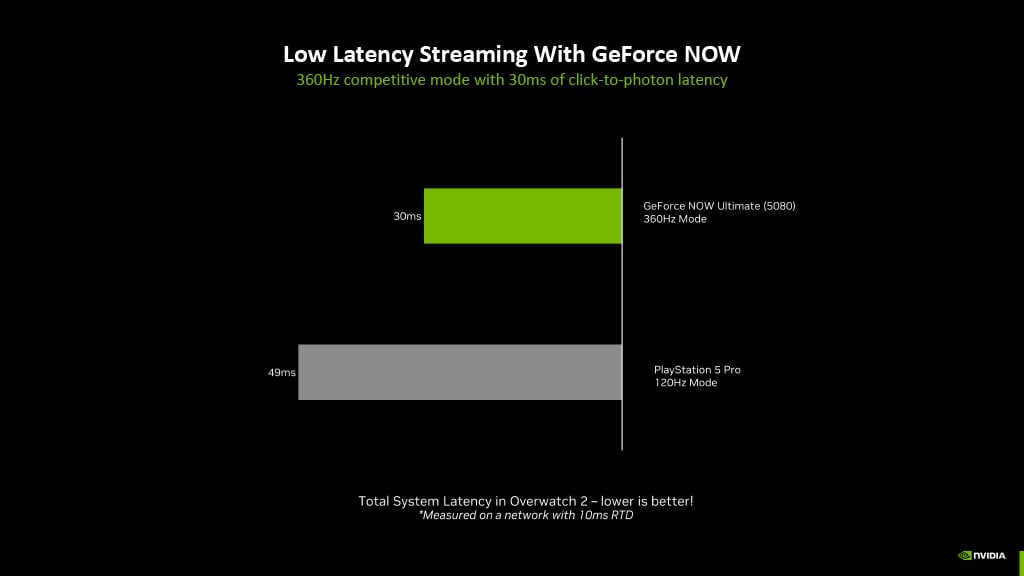
Nvidia is also improving the latency of GeForce Now, claiming that the service is actually more responsive than a PlayStation 5 Pro running locally (30ms vs. 49ms). This is under ideal conditions, of course, which are contingent on your Internet Service Provider (ISP).
Server-side, GeForce Now is making Low Latency Steaming (LLS) possible through Nvidia Reflex and updates to packet pacing. Working in tandem with 360Hz streaming and Cloud G-Sync client-side, latency will come down.
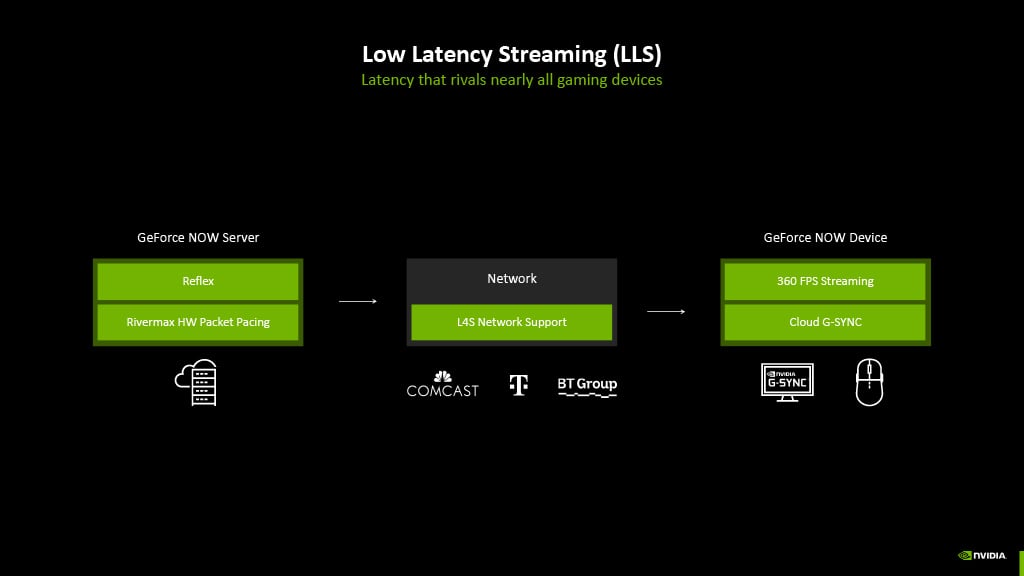
In order to feel the maximum benefits of Nvidia’s improvements, you’ll need an ISP that supports the L4S (Low Latency, Low Loss and Scalable Throughput) network protocol. In the UK, Vodafone was trialling the tech back in 2024 but Nvidia is working with the likes of Comcast, T-Mobile, and BT Group to speed up rollout.
SteamOS and more
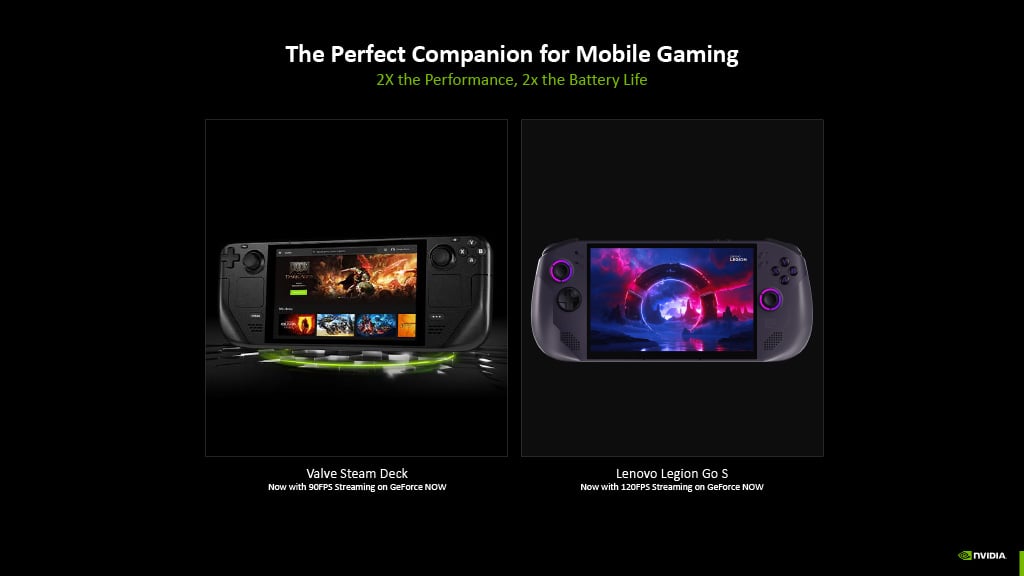
Nvidia launched a native GeForce Now application for SteamOS earlier this year. While the app was perfectly suitable for Steam Deck LCD, owners of OLED models weren’t able to make full use of their greater refresh rate. That changes now.
Steam Deck OLED will finally be able to stream GeForce Now at 90fps. Better yet, Nvidia is also throwing Legion Go S a bone, allowing the system to stream at 120fps.
As someone that regularly uses GeForce Now on their Steam Deck OLED, this update is music to my ears. I can’t wait for that 50% bump to improve the latency and smoothness of my stream.
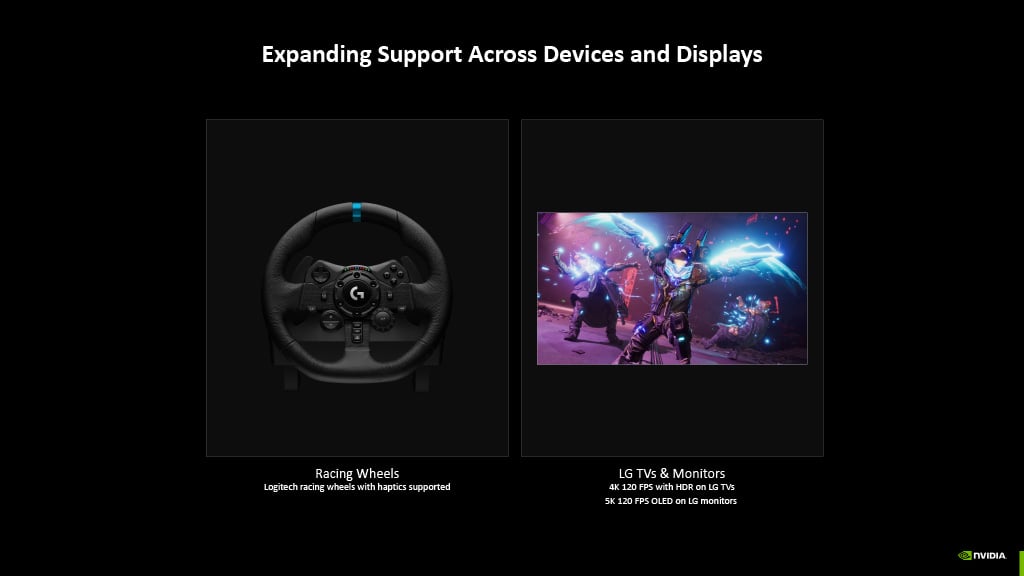
Outside of SteamOS, Nvidia is also bringing support for Logitech racing wheels to GeForce Now. This introduction comes complete with haptics for a proper immersive drive.
Finally, 2025 LG TVs and monitors will benefit from improvements to streaming resolutions and refresh rates. More specifically, LG TVs can enjoy 4K/120Hz with HDR and LG OLED monitors go one step further at 5K/120fps.
Wrapping Up
Make no mistake, this is the most significant update to GeForce Now in the service’s history. Credit where it’s due, I’m glad to see Nvidia improve the streaming platform at no additional cost to new or existing users.
About the only thing missing from this announcement is some love for lower tier memberships. Excited as I am at the prospect of RTX 5080 performance, it only makes sense that older SuperPods trickle down to other users.
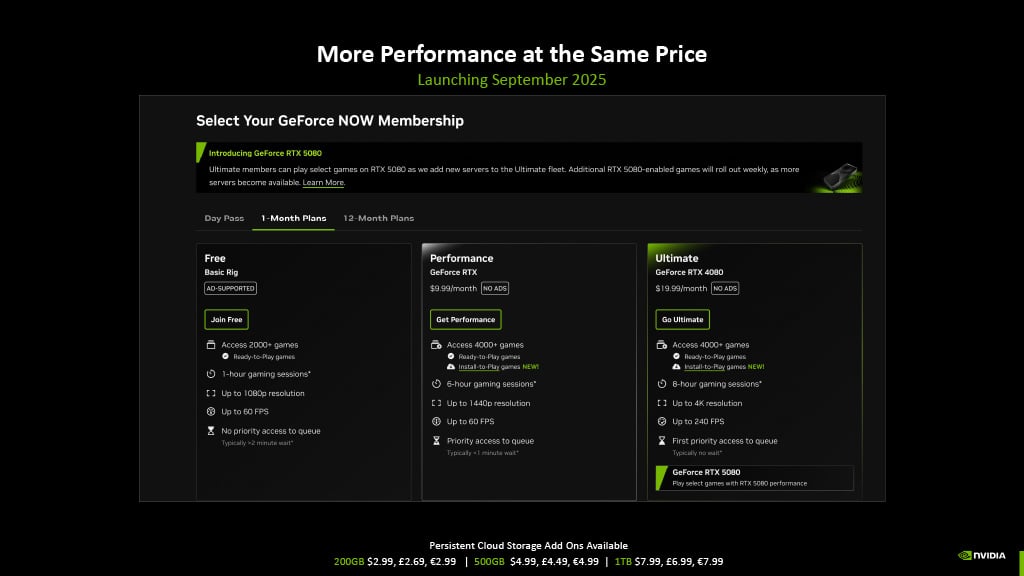
You’ll be able to try all of this out for yourself from September onwards. The immediate availability of RTX 5080 SuperPods will vary by region, so make sure to check relevant support pages.
For more on everything Nvidia, keep following Club386 on Google News as well as your preferred social network.


